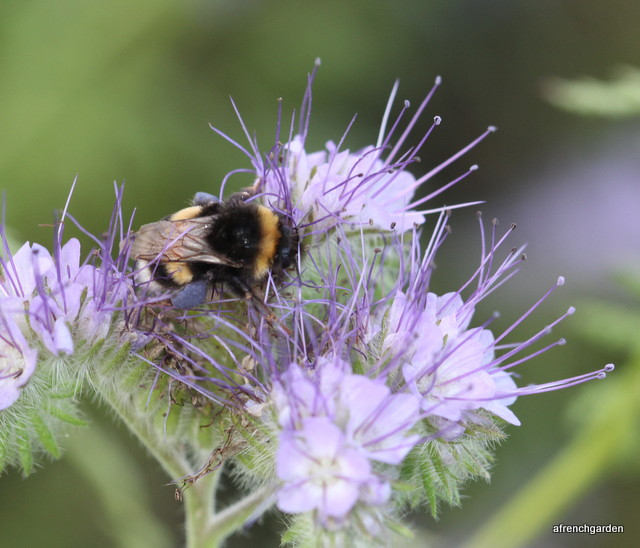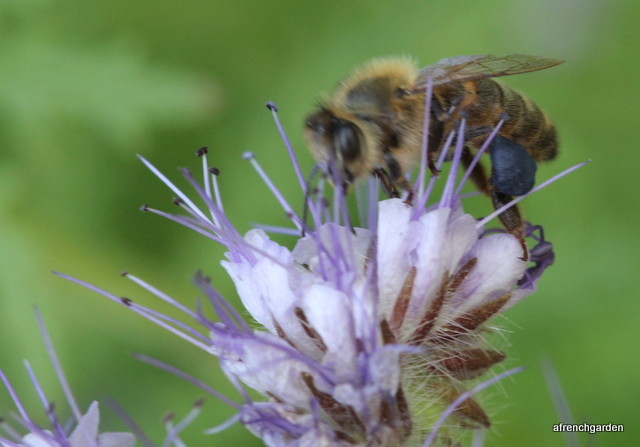
We have been enjoying an exceptionally warm period here and it has coincided with the first flush of our Wisteria. The white Wisteria is exceptionally perfumed so we felt really lucky to be able to take our coffee and lunches outside while enjoying the intoxicating perfume.
The Wisteria here grows rampant and has to be cut back several times a year. The roots of the purple Wisteria get into the border and I have to cut back long shoots that run for metres and I only discover them in the autumn as things die back.
The Hellebore also were magnificent this year with long flower stalks supporting multi flower heads, I think the months of rain suited them very well. There was so much growth that I had to cut off the finished flowers, filling four barrow loads of spent flower heads from just the front garden.
Everthing comes at a cost in the garden.

This was the first year we had seen the Azara dentata flower so plentifully. It was planted in 2021 as was the flowering Ash behind it.

I planted it, and the flowering Ash in 2021 after reading “The Creation of a Garden”. Nothing like a good gardening book to inspire and give ideas for different plants. The Azara provides masses of pollen as can be attested from the pollen basket of the honeybee in the photo above.

Another feature of the garden at this time is the Cerinthe major. It self seeds now. I have gathered seed in the past but it is difficult as the ripe seed drops off and the almost ripe keeps hold of the seed coat but it will still germinate.
The flowers are full of bumble bees and Anthophora – the furry little gray bees here (in the U.K. they are black).

Our quince tree has been flowering. The pale pink flowers are so perfect against the soft green leaves. The fruit, much as I treasure it, is always attacked and we can only salvage the unblemished parts to use.

Our first poppy in the garden grew on the wall! You cannot but admire the tenacity of a plant that can flourish in such a poor environment. Our other self seeded poppies in the ground have yet to flower.

The hoopoes are summer visitors and a pair come every evening to forage in the front garden.

We do not see many Goldfinches at this time of year. This one looks as if he was coming to check out if we had any flowers seeding at the moment but he had to leave with an empty beak. We will see more of them in the autumn.

Some of our favourite garden residents are the marbled newts (Triturus marmoratus) they are such gentle creatures. These ones were resting contentedly under the rotting leg of our garden bench. The two legs had been made of cut wood from the garden and they had to be replaced to support the bench. I suppose the rotting wood provided a pleasant extra heat source. There were four of them curled up together although the photograph only shows three. We often find several curled up together.
We have never seen them in the house, it is probably too dry for them.

The local whip snakes do, on occasion, come into the house. They soon disappear if they see you or hear your footsteps. Their proper name is Hierophis viridiflavus and they are quite harmless. We often find their cast skins around the garden and outbuildings.

This one made a quick exit out the door, round the corner and into a hole in the wall near the base of our rose Mme Isaac Pereire. Once safe it can never resist a parting hiss as if to say “You did not frighten me one bit!”

The rose provides good shelter for the comings and goings of the snake, largely unseen by us.












































